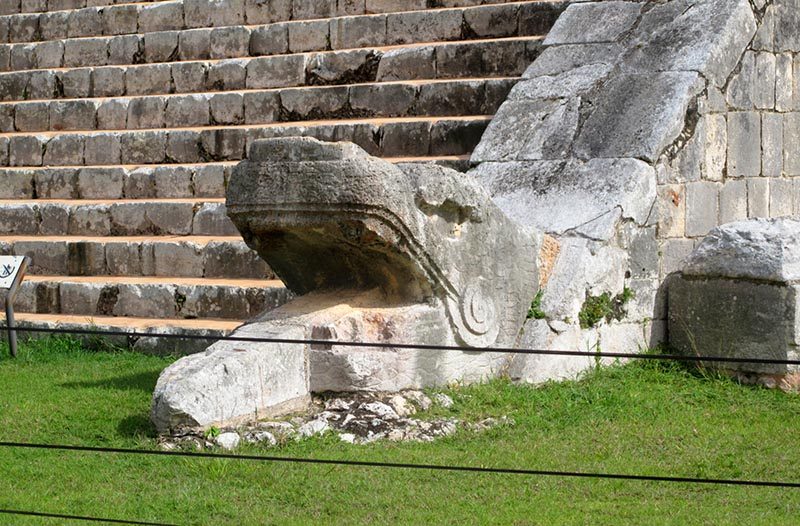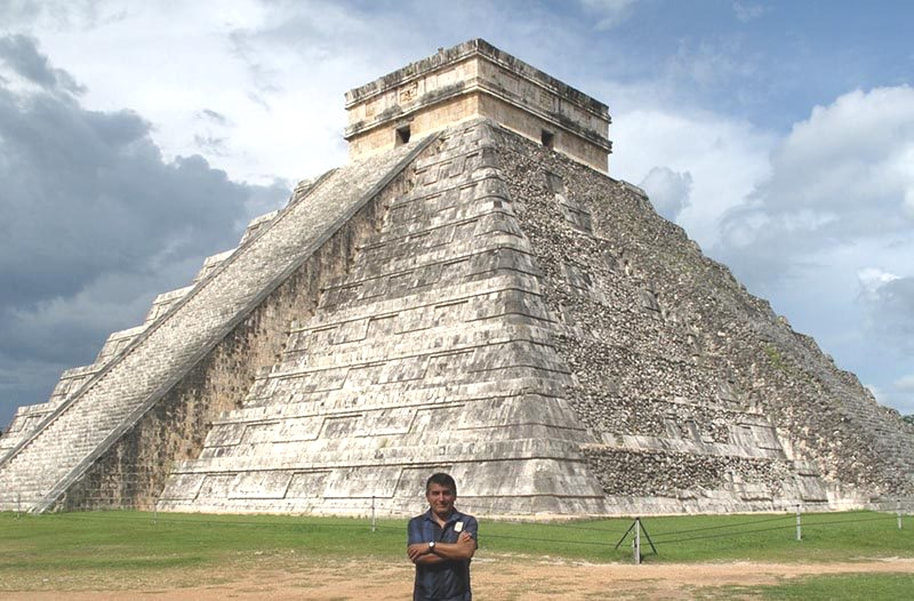This article was published by Emi Mendoza in the magazine EXPOSED, JRC fotocineclub’s journal Vol. 3, February 2020
Ever since I was very young, I had always wanted to visit the archaeological zone of Chichen Itza, in the state of Yucatan, and admire the beautiful pyramid of Kukulcan. I finally had the opportunity to do it and it was a very exciting experience. We entered the archaeological site from one of the back entrances; we walked along paths full of vegetation, sculptures and gardens very well arranged. While we walked through the tropical vegetation, I managed to glimpse the majesty of the imposing pyramid of Kukulcan ... I got goosebumps to discover among the trees that pyramid monument that dominates the archaeological site! It is amazing to be in front of this wonderful work of art ... Simply amazing!
Mayan civilization
Chichen Itza is an ancient Mayan city in ruins. It is located about 120 km from the city of Merida, the capital of the state of Yucatan. The Itza, a Maya ethnic group that had a predominant political and economic position in that part of the Yucatan, settled there more than a thousand years ago taking advantage of two large natural water tanks (Cenotes), resulting from the collapse of limestone bedrock that exposes groundwater underneath, the only source of water in that arid zone. The name Chichen Itza derives from the Mayan words chi "mouth" and che'en "well", and literally means "In the mouth of the well of Itza."
The Castle
Kukulcan pyramid, also known as "the Castle", prevails among several buildings, which make up the archaeological site. The “Castle” nickname is because the Spanish conquerors were looking for some architectural similarity with those existing in the European continent, comparing it to a royal palace.
|
The Maya built the structure between the ninth and twelfth centuries and it served as a temple dedicated to the god Kukulcan. Kukulcan or Kukulkan is a word in the Mayan language composed of: kuk "pen" with an adjective suffix -ul, and can, "snake", therefore literally means "feathered serpent". Kukulcan is the god who protected the divinity of priests, according to Maya mythology, a cult closely bound to the god Quetzalcoatl known to the Aztecs and other Mesoamerican cultures.
|
A relatively small pyramid
|
The pyramid of Kukulcan is 24 m high, and an additional 6 m of the temple, make a total of 30 meters high, very low with respect to that of Cheops in Egypt or that of the Sun in Teotihuacan. The square base measures a little more than 55 meters wide. The structure has nine bases in the form of square terraces whose walls are covered with panels that make bas-relief designs. The construction has four steep staircase in each of the four faces consisting of 91 steps that ascends to the top platform. The total sum of steps is 364 and considering the upper platform of the temple as one more step, the pyramid has 365 steps representing the days of the year in the ordinary Mayan calendar.
|
Kukulcan's descent
Two sculptures in the shape of feathered serpent heads that adorn the base of the main staircase seem extend up to the flank of the stairs in the form of railing.
During the spring and autumn equinoxes, the afternoon sun that reaches that corner of the pyramid casts a series of triangular shadows against that balustrade, creating the illusion of a snake that creeps down slowly.
Oh what a disappointment!
The research continues
|
Recently at a press conference, a group of researchers from the National University of Mexico announced the discovery of a small pyramid inside the Kukulcan temple. The discovery was made using three-dimensional electrical tomography technology that analyses the interior without damaging the structure. This matrioska doll-like phenomenon resembles the Great Pyramid of Cholula, which was built on top of other smaller constructions.
|
Kukulcan Nights
|
At dusk, we attended the show "Nights of Kukulcan". This is a quick visit at the archaeological site of Chichen Itza in the dark. During the tour that lasts less than two hours, you can see some of the main monuments in the surroundings of the Pyramid of Kukulcan. Among others, the wall where the ball game was practiced and the temple of the warriors with the vestige of dozens of columns. Colours of different shades illuminate the monuments while visitors receive a brief explanation of each of them through a recording. Finally, we sat in front of the pyramid of Kukulcan, a projection on the 3D pyramid of lights with fascinating combinations of multi-coloured designs and music that brought us closer to the ancient Mayan culture.
|
See you soon
Very nice night show, however, I want to emphasize that the best time to appreciate the pyramid of Kukulcan is during the day. Standing in front of the pyramid on a sunny day like the one we had is essential to appreciate the magnificence of our ancestors...














